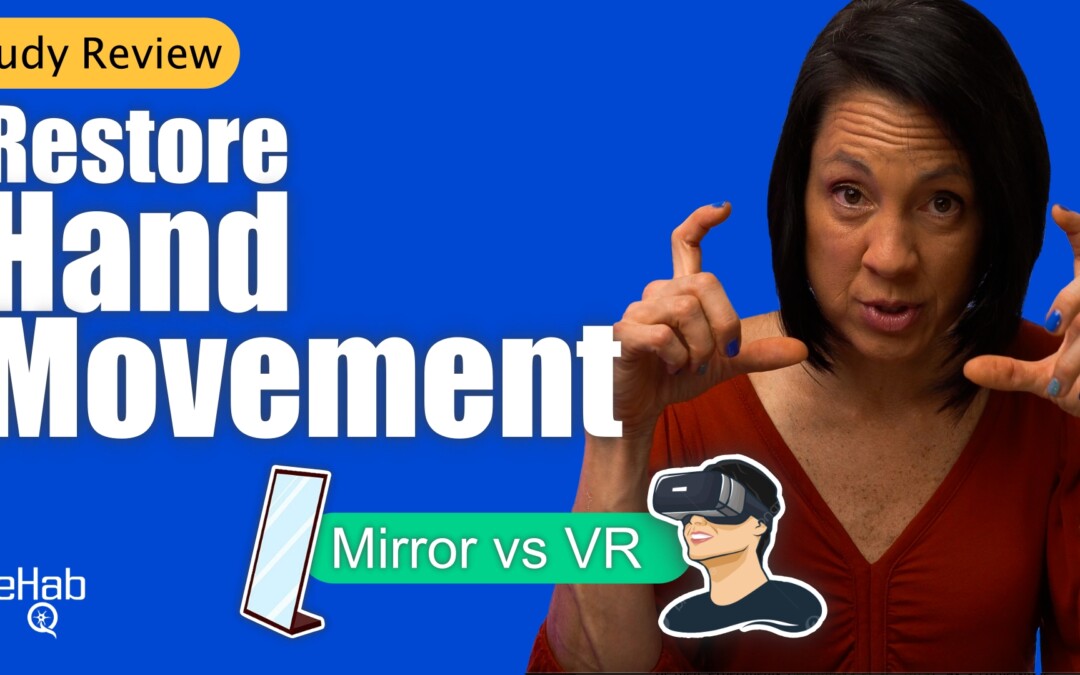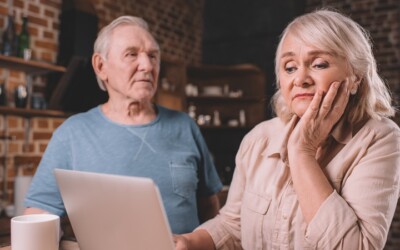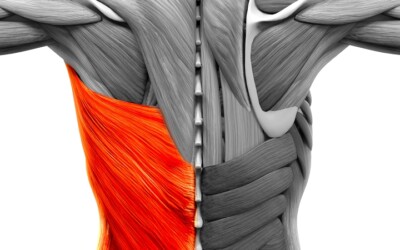Mirror Therapy & VR: Stroke Recovery for the Hand
If you’ve lost movement in your arm after a stroke, you’ve probably wondered: “Is my arm just weak, or is something deeper going on in my brain?”
That’s not because your muscles forgot how to work, it’s because the “wiring” in your brain that controls movement has been disrupted.
What Happens to the Brain After a Stroke
Normally, when you decide to move, say, to grab a coffee cup. Your brain sends messages down little “wires” (nerves) to your muscles. Your muscles move, then your brain gets feedback about where your arm is, and you adjust.
After a stroke, that wiring gets messed up. Sometimes the signal doesn’t get through at all. Other times, the message gets scrambled and your arm just doesn’t cooperate.
What Mirror Therapy Does
Mirror therapy is kind of like tricking your brain.
You put a mirror in front of your good arm so that when you move it, it looks like your weak arm is moving. And guess what? Your brain starts to believe it.
Why does this matter? Because seeing the movement actually wakes up the damaged side of your brain. It’s like giving that side of your brain a workout, even if your arm itself isn’t moving much yet.
Why It Helps
It gives your weaker side a chance to stay “in the game.”
It builds new connections in your brain (this is called neuroplasticity).
It works even if you don’t have much movement yet.
And the best part? You don’t need fancy equipment. Just a mirror and a little bit of time.
The Catch
Of course, it’s not perfect.
Some people find it weird or boring to stare at a mirror.
You can only do so many movements in a little mirror box.
It takes consistency. We’re talking daily practice, not once in a while.
That said, even with its limits, it can still be a really powerful tool.
The Future of Mirror Therapy
Researchers are now testing ways to make this idea even better. Some are using video feedback or even virtual reality to make the illusion stronger and more engaging. Imagine putting on VR goggles and seeing your weak arm move smoothly, that’s the direction things are heading.
How to Try It Yourself
- Get a mirror box or a simple mirror.
- Set aside 15–20 minutes a day.
- Move your strong arm, but watch the mirror so it looks like your weak arm is doing it.
- Stick with it. The brain needs repetition.
Final Thoughts
Recovery after stroke is never just about muscles. It’s about teaching your brain new tricks and helping it reconnect the dots. Mirror therapy might look simple, even silly, but it works because it taps into how your brain is wired.
So, if you’re stuck and feel like your recovery has stalled, this could be worth adding to your routine. Small, consistent steps really do add up.
Have you tried mirror therapy or VR exercises for your hand? Have you noticed any changes in movement or coordination? Share your experiences in our chat board where we can all learn from each other.
And if you want structured guidance, step-by-step exercises, and a full library of at-home recovery tools, check out our Rehab HQ Membership plans.
.
Articles you may be interested in
3 Big Balance Mistakes After Stroke—and How to Fix Them
Have you ever felt like your balance is fine at home… but the moment you step outside, it’s a totally different story? You’re not alone—and there’s a good reason for that. I talk to a lot of people who say, “I feel pretty confident walking around my house, but the...
Post Stroke “help” isn’t helpful: A Lesson from the Butterfly
“We delight in the beauty of the butterfly, but rarely admit the changes it has gone through to achieve that beauty.” — Maya Angelou “If only I had more help”… More therapy. More equipment. More family support. “Then things would be different. I would be different....
Neuroplasticity and Recovery: How Life’s Loops Shape Growth and Transformation
"The adventure of life is to learn. The purpose of life is to grow. The nature of life is to change." — Unknown “Why run that far when you have a perfectly reliable car?” Back in my marathon days, this rhetorical question was something I heard more times than I can...
Stroke Recovery for the Brain: Boost Memory, Focus, and Thinking Skills
Stroke Recovery for the Brain: Boost Memory, Focus, and Thinking Skills We often talk about walking again. Moving your arm again. Lifting your leg. And yes—those goals are important. But here’s what we don’t talk about enough: That moment you walk into a room and...
The Secret to Stroke Recovery Success
"The secret to winning is learning how to lose. That is, learning to bounce back from failure and disappointment—undeterred—and continuing to steadily march toward your potential. Your response to failure determines your capacity for success." -James Clear, author of...
The Hidden Culprit: How the Latissimus Dorsi Limits Shoulder Recovery After Stroke
The Hidden Culprit: How the Latissimus Dorsi Limits Shoulder Recovery after Stroke It’s the silent barrier most people never think about. When we talk about restoring arm movement after a stroke, most of the focus is on the obvious: the shoulder joint, the triceps,...
How to Fix Knee Buckling Post Stroke
Why Your Knee Buckles—and How to Regain Control Say Goodbye to Knee Giving Way and Hello to Confident Walking https://youtu.be/wNZxiTXTz7QWhat Is Knee Buckling? Knee buckling refers to a sudden, unexpected loss of stability in the knee joint, often described as the...
Understanding and Fixing Leg Cramps Post Stroke
Clonus Explained: What It Is, Why It Happens, and What You Can Do About It Stop Letting Leg Cramps Slow Your Recovery https://youtu.be/fGNGXoMSvT4 Can Clonus Affect the Way You Walk? Absolutely—Here’s What You Need to Know Have you ever felt your foot suddenly...
Why Your Hand Still Won’t Open After Stroke | 3 Mistakes to Fix
Why Forcing It Doesn't Work How to Stop Reinforcing the Wrong Patterns and Start Rewiring Your Brain for Real Recovery https://youtu.be/fDIgGLM8Kj0If you’ve had a stroke (or other neurologic injury), and your hand feels like it’s stuck in a fist or your arm just hangs...
Understanding Abnormal Synergy Patterns After Stroke: The Missing Puzzle Piece in Recovery
Understanding Abnormal Synergy Patterns After Stroke: The Missing Puzzle Piece in Recovery Stroke recovery is rarely straightforward.You might work on strength, balance, and mobility—yet your movements still feel awkward, stiff, or “robotic.” Why?One of the most...














